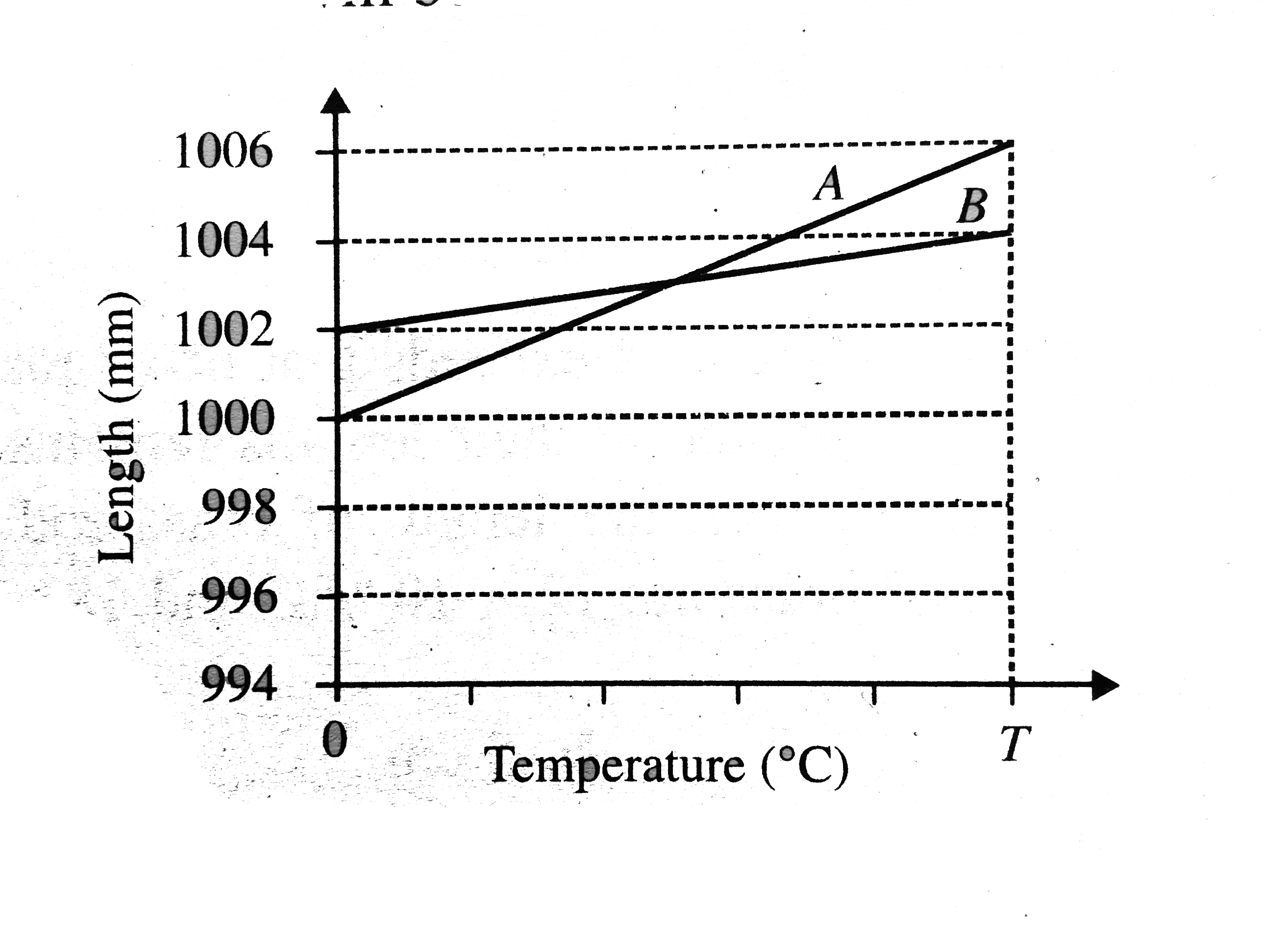Find the temperature at which the fundamental frequency of an organ pipe is independent of small variation in temperature in terms of the coefficient of linear expansion ( α) of the material of the tube.
1/3α
1/2α
1/4α
1/5α
The correct Answer is:B
To find the temperature at which the fundamental frequency of an organ pipe is independent of small variations in temperature in terms of the coefficient of linear expansion (α) of the material of the tube, we can follow these steps:
1. Understanding the Fundamental Frequency:
The fundamental frequency (f) of an organ pipe is given by the formula:
f=V2L
where V is the velocity of sound in the pipe and L is the length of the pipe.
2. Length of the Organ Pipe:
The length of the organ pipe at temperature T can be expressed as:
L=L0(1+α(T−T0))
where L0 is the original length at temperature T0 and α is the coefficient of linear expansion.
3. Velocity of Sound:
The velocity of sound in the medium can be expressed as:
V=√γRTM
where γ is the adiabatic index, R is the gas constant, T is the absolute temperature, and M is the molar mass.
4. Substituting into the Frequency Formula:
Substituting the expressions for V and L into the frequency formula, we get:
f(T)=√γRTM2L0(1+α(T−T0))
5. Condition for Independence from Temperature:
We want to find the temperature T such that small variations in temperature do not affect the frequency. This means:
f(T)≈f(T0)
for small T−T0.
6. Using the Binomial Approximation:
For small T−T0, we can use the binomial approximation:
√1+x≈1+x2
Applying this to our frequency equation, we can simplify it.
7. Equating Terms:
By equating the terms derived from the frequency expressions, we find:
12T−T0T0=α(T−T0)
8. Solving for T0:
Rearranging gives:
α=12T0
Thus, we can express T0 in terms of α:
T0=12α
Final Answer:
The temperature at which the fundamental frequency of an organ pipe is independent of small variations in temperature is:
T0=12α
The fundamental frequency (f) of an organ pipe is given by the formula:
f=V2L
where V is the velocity of sound in the pipe and L is the length of the pipe.
The length of the organ pipe at temperature T can be expressed as:
L=L0(1+α(T−T0))
where L0 is the original length at temperature T0 and α is the coefficient of linear expansion.
The velocity of sound in the medium can be expressed as:
V=√γRTM
where γ is the adiabatic index, R is the gas constant, T is the absolute temperature, and M is the molar mass.
Substituting the expressions for V and L into the frequency formula, we get:
f(T)=√γRTM2L0(1+α(T−T0))
We want to find the temperature T such that small variations in temperature do not affect the frequency. This means:
f(T)≈f(T0)
for small T−T0.
For small T−T0, we can use the binomial approximation:
√1+x≈1+x2
Applying this to our frequency equation, we can simplify it.
By equating the terms derived from the frequency expressions, we find:
12T−T0T0=α(T−T0)
Rearranging gives:
α=12T0
Thus, we can express T0 in terms of α:
T0=12α
The temperature at which the fundamental frequency of an organ pipe is independent of small variations in temperature is:
T0=12α
Topper's Solved these Questions
- BOOK - NCERT FINGERTPS ENGLISHCHAPTER - WAVESEXERCISE - EXEMPLER10videos
WAVES
- BOOK - NCERT FINGERTPS ENGLISHCHAPTER - WAVESEXERCISE - ASSERTION15videos
WAVES
- BOOK - NCERT FINGERTPS ENGLISHCHAPTER - WAVESEXERCISE - Assertion And Reason15videos
WAVES
- BOOK - NCERT FINGERTPS ENGLISHCHAPTER - UNITS AND MEASUREMENTSEXERCISE - Assertion And Reason15videos
UNITS AND MEASUREMENTS
- BOOK - NCERT FINGERTPS ENGLISHCHAPTER - WORK , ENERGY AND POWEREXERCISE - Assertion And Reason15videos
WORK , ENERGY AND POWER
Similar Questions
Knowledge Check
- Question 1 - Select One
With the increase in temperature, the frequency of the sound from an organ pipe
AdecreasesBincreasesCremains unchangedDchanges erratically - Question 2 - Select One
Assertion: The fundamental frequency of an open organ pipe increases as the temperature is increased.
Reason: As the temperature increases, the velocity of sound increases more rapidly than length of the pipe.AIf both assertion and reason are true and reason is the correct explanation of assertion.BIf both assertion and reason are true but reason is not the correct explanation of assertion.CIf assertion is true but reason is false.DIf both assertion and reason are false.
Let γ : coefficient of volume expansion of the liquid and α : coefficient of linear expansion of the material of the tube
View SolutionThe ratio of fundamental frequencies of an open organ pipe and a cloed organ pipe of same length at same temperature is
View SolutionOrganisms which can tolerate only small variations in temperature are called
View Solution
The variation of length of two metal rods A and B with change in temperature is shown in Fig. the coefficient of linear expansion αA for the metal A and the temperature T will beView SolutionA thread of liquid is in a uniform capillary tube of length L. As measured by a ruler. The temperature of the tube and thread of liquid is raised by ΔT. If γ be the coefficient of volume expansion of the liquid and α be the coefficient of linear expansion of the material of the tube, then the increase ΔL in the length of the thread, again measured by the ruler will be
View SolutionA thread of liquid is in a uniform capillary tube of length L. As measured by a ruler. The temperature of the tube and thread of liquid is raised by ΔT. If γ be the coefficient of volume expansion of the liquid and α be the coefficient of linear expansion of the material of the tube, then the increase ΔL in the length of the thread, again measured by the ruler will be
View Solution

